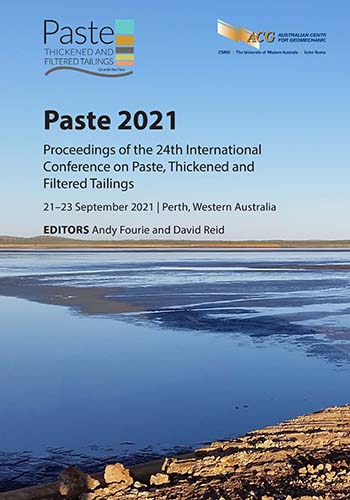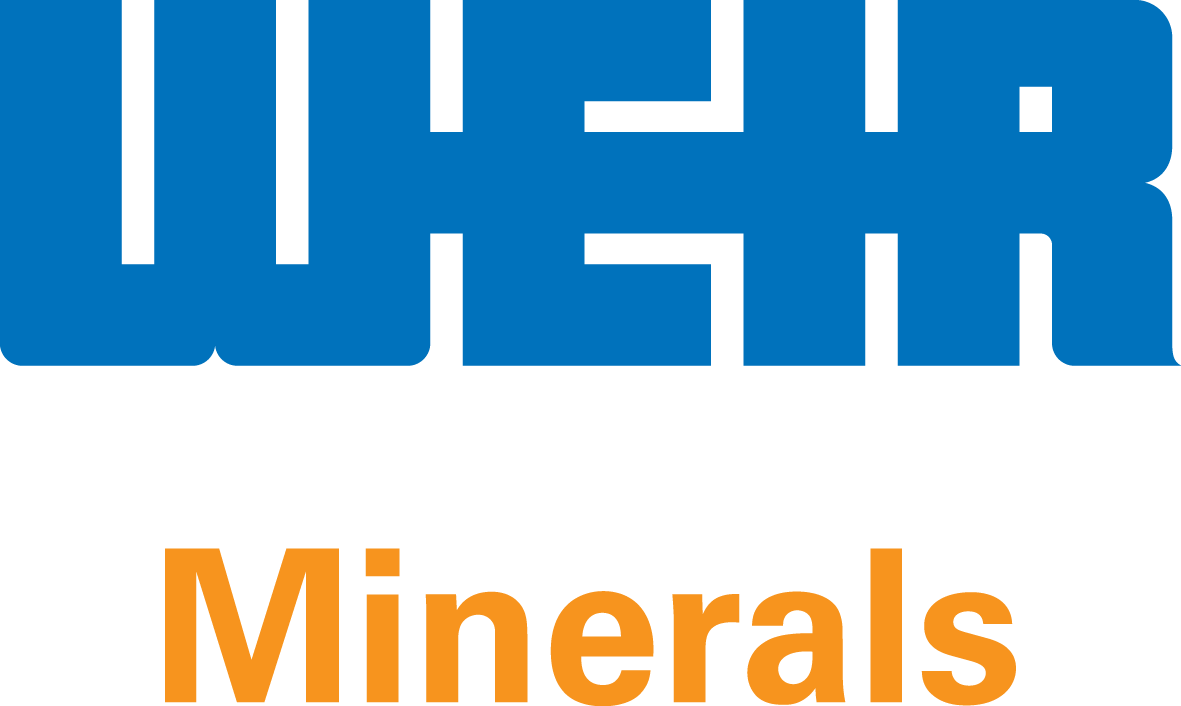Tailings storage facility surface moisture mapping for prediction of dusting events – and other benefits

|
Authors: Thompson, J; McDonald, L; Kelcey, J; Dixon, J |
DOI https://doi.org/10.36487/ACG_repo/2115_25
Cite As:
Thompson, J, McDonald, L, Kelcey, J & Dixon, J 2021, 'Tailings storage facility surface moisture mapping for prediction of dusting events – and other benefits', in AB Fourie & D Reid (eds), Paste 2021: Proceedings of the 24th International Conference on Paste, Thickened and Filtered Tailings, Australian Centre for Geomechanics, Perth, pp. 301-314, https://doi.org/10.36487/ACG_repo/2115_25
Abstract:
The fine-grained nature of some tailings materials can lead to dusting on tailings storage facilities (TSFs). Dusting has the potential to negatively affect the health of workers, nearby communities, and the surrounding environment which may adversely affect a mining operator’s ability to operate. Mitigation measures to prevent dusting can be expensive and aren’t always successful. Advances in monitoring systems allow the relative surface moisture of tailings beaches to be monitored during operations providing the opportunity to identify and forward plan the depositional strategy to minimise the risk of dusting. This paper presents the outcomes of a study that utilised predictive methods based on advanced synthetic aperture radar and multispectral data coupled with Google Earth Engine to develop a model for particular TSFs based on historical records, observations, and material types. Google Earth Engine brings the first opportunity to use a systematic and comprehensive combination of radar and visual-infrared satellite data. It was found that the synergy between the two data types could be used to offset the individual ambiguities of each, and the resulting method delivered a predictive dryness probability map and visual moisture/water depth/presence indicators that were able to be verified and made operational almost immediately. On-ground visual records and aerial imagery provided qualitative verification of the approach. The methodology allows TSF operators a free, open source platform with which to monitor and map surface moisture, enabling proactive deposition decision-making to mitigate the risk of tailings dusting. Additional benefits realised include increased data on beach formation, channel and pond location (extent and to some degree depth), improving the accuracy of the TSF water balance. For the particular TSFs studied, the water balance is a critical control from a safety perspective to mitigate potential failure mechanisms, and from an operational perspective to maximise tailings density and water return to the plant.
Keywords: tailings storage facility, tailings, dusting, environment, monitoring, satellite, water balance
References:
Bousbih, S, Zribi, M, El Hajj, M, Baghdadi, N, Lili-Chabaane, Z, Gao, Q & Fanise, P 2018, ‘Soil moisture and irrigation mapping in a semiarid region, based on the synergetic use of Sentinel-1 and Sentinel-2 data’, Remote Sensing, vol. 10, no. 12,
Department of Jobs, Tourism, Science and Innovation 2020, Western Australia Iron Ore Profile August 2020, Perth.
Karvonen, J, Simila & Makynen, M 2005, ‘Open water detection from Baltic Sea ice Radarsat-1 SAR imagery’, IEEE Geoscience and Remote Sensing Letters, vol. 2, no. 3, pp. 275–279.
Kok, JF, Parteli, EJR, Michaels, TI & Karam, DB 2012, ‘The physics of wind-blow dust and sand’, Reports on Progress in Physics, vol. 75, no. 10.
Laukamp, C 2011, Short Wave Infrared Functional Groups of Rock-forming Minerals, report number EP115222, CSIRO Earth Science and Resource Engineering, Bentley.
Liang, J & Liu, D 2020, ‘A local thresholding approach to flood water delineation using Sentinel-1 SAR imagery’, ISPRS Journal of Photogrammetry and Remote Sensing, vol. 159, pp. 53–62.
Lillesand, T, Kiefer, RW & Chipman, J 2015, Remote Sensing and Image Interpretation, John Wiley & Sons, Inc., Hoboken.
Martinis, S, Kuenzer, C, Wendleder, A, Huth, J, Twele, A, Roth, A & Dech, S 2015, ‘Comparing four operational SAR-based water and flood detection approaches’, International Journal of Remote Sensing, vol. 36, no. 13, pp. 3519–3543.
McConachy, TF, Yang, K, Boni, M & Evans, NJ 2007, ‘Spectral reflectance: preliminary data on a new technique with potential for nonsulphide base metal exploration’, Geochemistry: Exploration, Environment, Analysis, vol. 7, no. 2, pp. 139–151.
Tian, J & Philpot, WD 2015, ‘Relationship between surface soil water content, evaporation rate, and water absorption band depths in SWIR reflectance spectra’, Remote Sensing of Environment, vol. 169, pp. 280–289.
© Copyright 2025, Australian Centre for Geomechanics (ACG), The University of Western Australia. All rights reserved.
View copyright/legal information
Please direct any queries or error reports to repository-acg@uwa.edu.au
View copyright/legal information
Please direct any queries or error reports to repository-acg@uwa.edu.au





